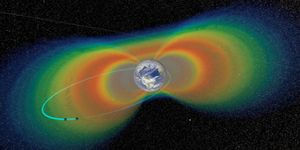The Darkest Part of the Universe--Boötes Void
In the northern night sky, you can sometimes find a foreleg-shaped cluster of stars known as the Boötes (Greek word for "herdsman") constellation. In its vicinity, there is an enormous dark space that is 330 million light-years across and shaped like a sphere. This is the famous Boötes void or Great Nothing.
Located around 700 million light-years from Earth, the Boötes void was first discovered by American Astronomer Robert Kirshner alongside with his University of Michigan colleagues back in 1981, during a survey of galaxy redshifts.
Since its discovery, 60 galaxies have been found inside this supersized void, which doesn't make the void seem that empty. But as astronomer Greg Aldering once described the scale of the Great Nothing, "if the Milky Way had been in the center of the Boötes void, we wouldn't have known there were other galaxies until the 1960s." (That was the time when astronomers first discovered pulsars and space probes were launched).
The precise mapping of the Cosmic Microwave Background (CMB) also observed a vast cold spot where the void is. Therefore, many scientists consider the void the most significant anomaly in our universe.
The origin of the Boötes void is highly debated. It was theorized that the Boötes void was the result of merged smaller voids, a phenomenon similar to small soap bubbles coalescing to form larger bubbles. But for those prefer to speculate, the Boötes void could be the home to an uber-advanced extraterrestrial civilization. This hypothetical species could have obtained the ability to harvest stars' energy by building Dyson Sphere-type structures, which ends up blocking the lights of many stars in the big "void".
Source: SEA via Youtube








